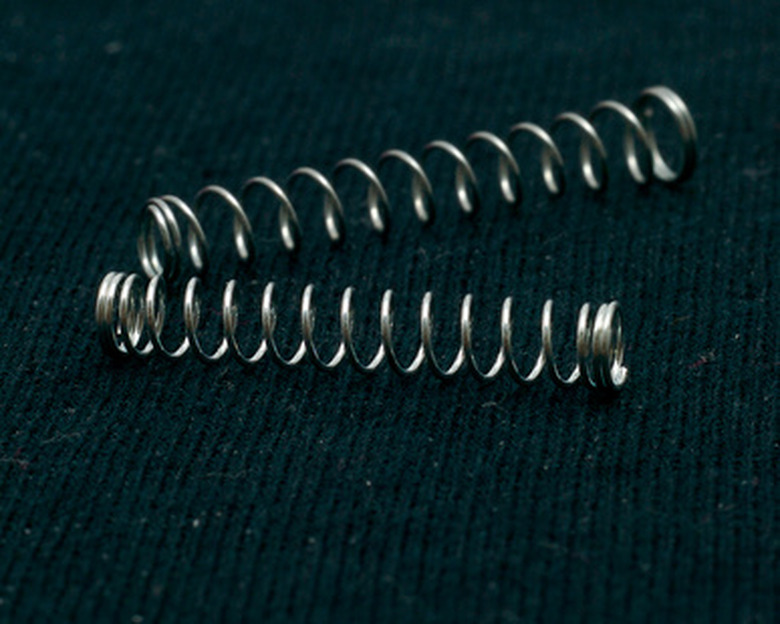How To Determine Shock Spring Rate
Think of the shock spring weight as the difference your foot will feel if a brick is on your toes versus dropping a brick on your toes. One is dynamic energy while the other is a static energy or a dead load. When a load is dynamic it exerts much greater force than when it is at rest. E = mc^2 is the way we've all learned it since 8th grade. Matter is energy and energy is matter and they are interchangeable. To determine shock spring weight, you're measuring the energy or dynamic weight exerted on a coiled spring. You're measuring the rate at which a coil spring is compressed by the dynamic energy exerted upon it. You'll need three measurements.
Step 1
Measure the diameter of the wire forming the spring. For most non-industrial uses it usually is about a ½ inch outside diameter or less. Take a click pen apart and take the spring off the ink tube and measure it or measure the coils on your mountain bike. In both instances — in fact all instances — the formula to determine the spring rate remains the same. Only the numbers and shock spring rate change.
Step 2
Determine the coil diameter. You can do this by measuring or arithmetically. The coil diameter is the measurement from the center of one coil to the center of the opposing coil. If you know the outside diameter and the wire diameter, the formula to determine the coil diameter would be: Coil Diameter equals Outside Diameter of the coil minus the wire diameter. That will tell you the center-to center of the center measurement of the coil or the coil diameter. You can always measure to make sure.
Step 3
Count the number of coils in the spring, excluding the top and bottom coils. Those aren't compression coils. They are considered seating or base coils. It's the coils in between that are compressed by dynamic (shock) or dead weight.
Step 4
Enter the appropriate figures into the Shock Spring Rate Calculator included in the references below and press the calculate button. It will provide you with the shock spring rate. Basically, the number is telling you the number of pounds per inch of spring the spring can withstand before it no longer has any further ability to compress. It is, for all intents and purposes, squished flat or, if not flat, it just has no more "give" to it. There is no more springiness to the spring.
Things Needed
- Wire diameter
- Coil diameter
- Number of coils
- Shock springweight calculator
Cite This Article
MLA
Ayers, Chuck. "How To Determine Shock Spring Rate" sciencing.com, https://www.sciencing.com/determine-shock-spring-rate-7760374/. 24 April 2017.
APA
Ayers, Chuck. (2017, April 24). How To Determine Shock Spring Rate. sciencing.com. Retrieved from https://www.sciencing.com/determine-shock-spring-rate-7760374/
Chicago
Ayers, Chuck. How To Determine Shock Spring Rate last modified March 24, 2022. https://www.sciencing.com/determine-shock-spring-rate-7760374/
